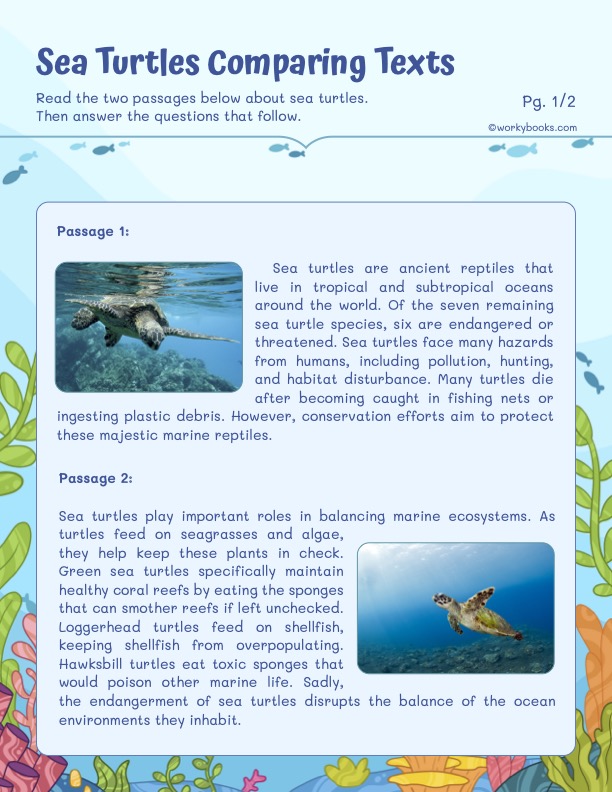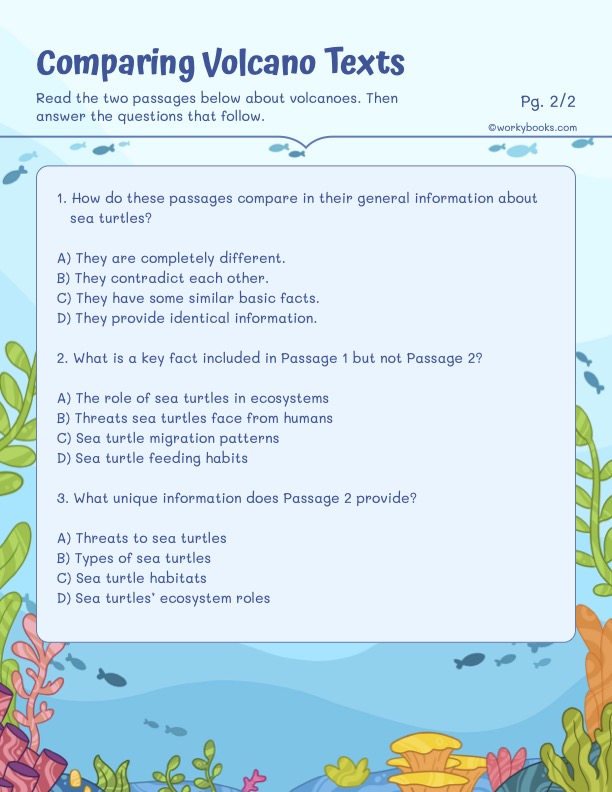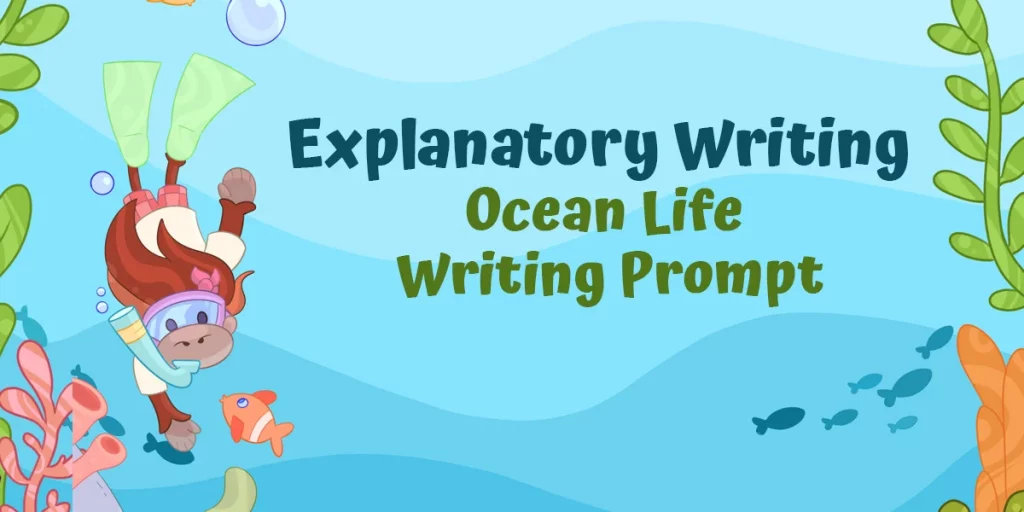Life Cycle of Sea Turtles
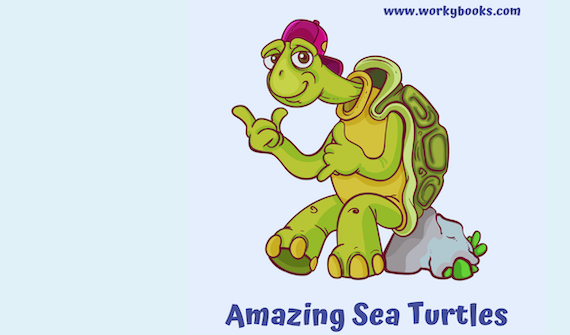
Sea Turtles are fascinating creatures that have roamed the Earth for millions of years. The life cycle of sea turtles is a remarkable journey that begins with a tiny egg and can last over a century. Let’s dive into the stages of a turtle’s life and learn some interesting facts along the way!
Stage: The Egg Stage of Sea Turtles
The life of a turtle begins inside an egg. Female turtles lay their eggs on sandy beaches, digging a hole with their flippers to create a nest. Depending on the species, a single turtle can lay anywhere from 50 to 200 eggs in one nesting season. These eggs are soft and leathery, providing protection as the baby turtles develop inside.
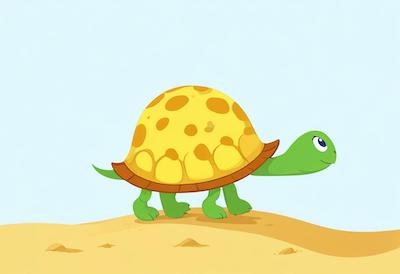
| Fun Fact: Did you know that the temperature of the sand determines the gender of the baby turtles? Warmer sand tends to produce more females, while cooler sand produces more males. |
Stage: Hatchlings of Sea Turtles
After about 60 days, the baby turtles, called hatchlings, are ready to emerge. They use a special tool called an “egg tooth,” a small, temporary tooth on the tip of their snouts, to break open the eggshell. This process is known as “pipping.” Once out of the egg, the hatchlings rest for a few days before making their way to the ocean.
The journey from the nest to the sea is fraught with danger. Hatchlings must avoid predators like birds, crabs, and other animals. They rely on the light of the moon and stars reflecting off the water to guide them to the ocean. Unfortunately, artificial lights from nearby buildings can disorient them, leading them away from the sea.
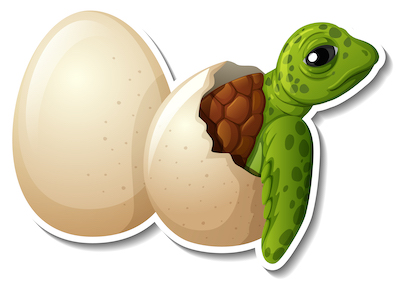
| Fun Fact: Hatchlings have a built-in GPS! They use the Earth’s magnetic field to navigate and find their way back to the beach where they were born when it’s time for them to lay eggs. |
Stage: Juvenile Stage of Sea Turtles
Once in the ocean, the young turtles enter what is known as the “lost years.” During this time, they are rarely seen and are believed to drift in ocean currents, feeding on plankton and other small marine organisms. This period can last several years as the turtles grow and develop.
As they mature, the turtles move to coastal areas where they find more abundant food sources like jellyfish, seaweed, and small fish. They continue to grow and can travel thousands of miles during their lifetime.
| Fun Fact: Sea turtles are great travelers! Some species, like the leatherback turtle, can migrate up to 12,000 miles each year. |
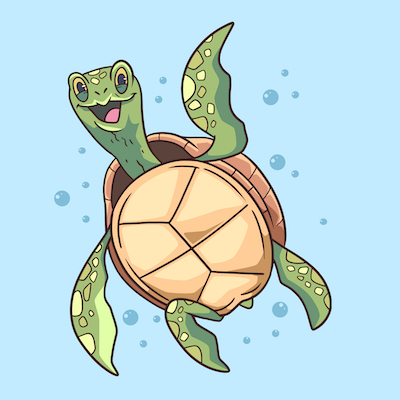
Stage: Adulthood of Sea Turtles
Turtles reach adulthood at different ages depending on their species. For example, loggerhead turtles reach maturity at around 35 years old, while green turtles can take up to 50 years. Once mature, turtles will return to the beaches where they were born to lay their eggs, continuing the life cycle.
Adult turtles have few predators, thanks to their large size and tough shells. However, they still face threats from humans, such as habitat destruction, pollution, and accidental capture in fishing gear.
| Fun Fact: Turtles are some of the longest-living animals on Earth. Some species can live over 100 years, making them true survivors of the animal kingdom. |
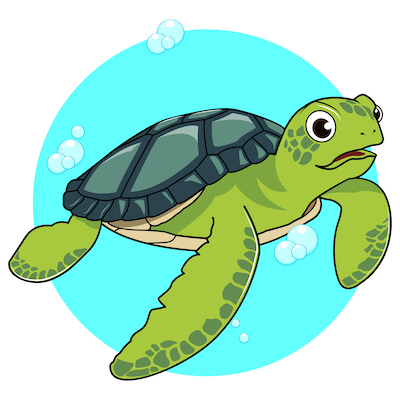
Conservation and Protection of Turtles
Turtles play a vital role in maintaining healthy marine ecosystems. They help control jellyfish populations and maintain the health of seagrass beds and coral reefs. Unfortunately, all seven species of sea turtles are currently listed as endangered or threatened due to human activities.
Conservation efforts are crucial to protect these ancient mariners. Organizations around the world are working to protect nesting sites, reduce bycatch in fishing gear, and educate the public about the importance of turtles. Simple actions like reducing plastic use, supporting sustainable seafood, and respecting wildlife can make a big difference.
World Turtle Day
World Turtle Day is celebrated annually on May 23rd. This day is dedicated to raising awareness about the protection and conservation of turtles and tortoises, as well as their disappearing habitats around the world. It was started by the American Tortoise Rescue in 2000 to encourage human action to help turtles and tortoises survive and thriv
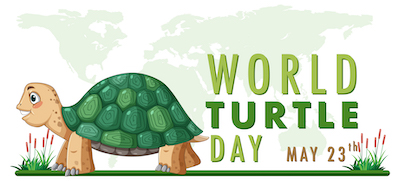
Turtles are true wonders of the natural world, with a life cycle that spans decades and covers thousands of miles. By understanding and appreciating their journey, we can play a part in their conservation and help ensure that these ancient creatures continue to thrive in our oceans. So next time you visit the beach, keep an eye out for turtle tracks and remember the incredible story of the turtle life cycle.
Here some great worksheets that are common core aligned to bring turtles to you classroom or homeschool.
